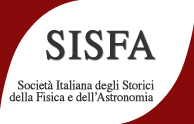Speaker
Description
In 1912, using the 'absolute vector calculus without coordinates' introduced a few years earlier together with Cesare Burali-Forti, Roberto Marcolongo provided an 'intrinsic' formulation—vectorial and coordinate-free—of the Lorentz-Poincaré transformations. The Lorentz-Poincaré-Marcolongo transformations are no longer solely interpretable as passive transformations between different inertial systems, but can also be understood as active transformations indicating dynamic changes in physical systems. These transformations also entail a different interpretation of time, which is no longer reduced to a mere coordinate dependent on the reference frame, but takes on a new relativistic dynamic meaning, linked to the magnetic field, as in the perspectives of Larmor, Poincaré, and Eddington.

